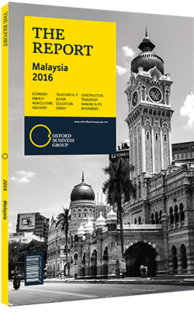Ruben Emir Gnanalingam, CEO, Westports Holdings: Interview

Interview: Ruben Emir Gnanalingam
How will the planned improvements to Port Klang’s road connectivity boost efficiencies?
RUBEN EMIR GNANALINGAM: The government’s allocation of RM300m ($74.3m) to upgrade last-mile connectivity to Port Klang is a good start, but it is nowhere near close to what is required. These roads have not been upgraded since they were built 20 years ago. That said, we are still very happy that the government has taken notice and is applying its resources to improving the road infrastructure here. The allocation of funds was maintained even after the budget review, so we are very appreciative of that.
The planned improvements will help Klang Valley’s entire logistics network, reduce costs and improve the lives of locals. However, it needs to be made clear that this should only be the beginning. We need five times more investment than is currently earmarked for connectivity improvements.
How are industry changes impacting Malaysia?
GNANALINGAM: In 2014 there was a reconfiguration of existing shipping alliances and the formation of new partnerships. It worked out well for us; Ocean Three (CMA CGM, United Arab Shipping Company and China Shipping Container Lines) decided to make us its hub, as they were already our largest customers. With their interests aligned, greater coordination and cooperation has resulted in more efficiency.
While shipping alliances and the corresponding increase in container ship sizes has caused problems for US ports, this is mainly due to the size of their yards. The difficulty lies in accommodating a 14,000-twenty-foot-equivalent-unit (TEU) ship dropping 8000 TEUs in a port that is equipped to handle 5000 at a time. Moving 3000 TEUs while the ship is still there is the real issue. This problem has been felt in a lot of ports around the world. However, since we are a trans-shipment port to begin with, we cater to ships of this size and have yards that can handle the traffic.
What are the main growth drivers of shipping?
GNANALINGAM: Both gateway cargo and trans-shipment are growing, but we expect trans-shipment to grow faster, as the former is restricted by the speed of growth of the Klang Valley. We expect ASEAN to be the main driver of growth in trans-shipment volumes, and this has been reflected in the feedback we have received from our customers. This is not just due to the impending ASEAN Economic Community implementation, but also to rising incomes and consumption in the region, and a greater capacity for trade.
Trans-shipment activity used to be very dependent on China, but it is now more dependent on South-east Asia (SEA) – and with SEA’s growth projected at 6-7% per year for the next 20 years, we expect this trend to continue. The beauty of SEA is that, while it has half the population of China, the countries’ different growth rates allow for balance and consistency; if growth slows in one state, the region compensates.
Should Malaysia aim to capture more global trade?
GNANALINGAM: The US has a very small percentage of global shipping trade and no longer has a national container line. There are actually very few countries with large carriers left. Japan and Hong Kong have three apiece, while Taiwan and South Korea have six each. However, a lot of these started as small local operators, as shipping is necessary for island nations. We already have many carriers catering to east and west Malaysia. While countries used to think they needed their own shipping line, much like their own airline, governments are now realising that as long as the country is stable, this is not necessary.
Although it is important to have a role in global trade, more market share does not automatically result in higher profits. On the non-container side, however, there are many lucrative opportunities as far as tankers, bulk carriers and cruise ships are concerned, so Malaysia should get more involved in these areas.
You have reached the limit of premium articles you can view for free.
Choose from the options below to purchase print or digital editions of our Reports. You can also purchase a website subscription giving you unlimited access to all of our Reports online for 12 months.
If you have already purchased this Report or have a website subscription, please login to continue.

